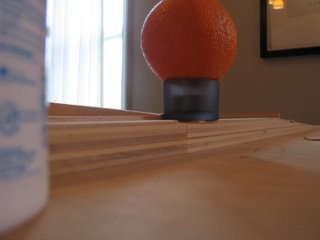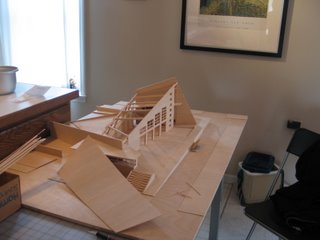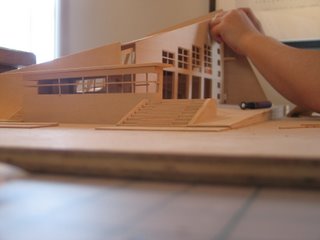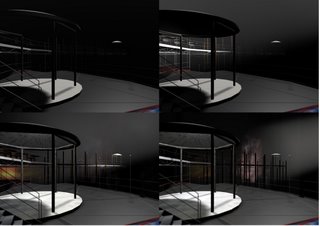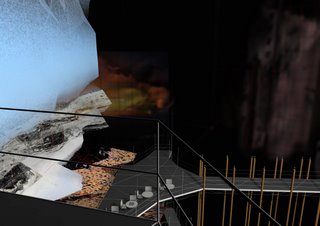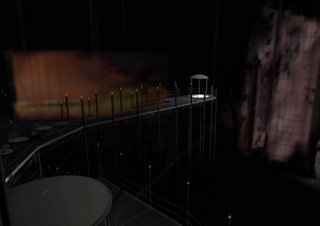Let’s face it. Architecture hinges on taste. We try to argue, try to rationalize, but really, if you like something, you like it, regardless of the reasons.
The problem with acknowledging this simple fact is this: how do you differentiate between “good” or “bad”? What makes one project note-worthy while another languishes in obscurity? And, as a student, the biggest question on your mind: how does your professor really evaluate your project?
Each semester, every studio professor felt it necessary to outline their grading process. And of course they would; the reality is, as students first and foremost, our grades were a priority. We saw grades as concrete evaluations of our potential success or failure as a would-be architecture professional. Even if our professors tried to tell us otherwise.
After the first couple of times, you realized that the same thing was being said semester after semester. It was specific enough to make you feel like, yes, this time, you had a chance, but generic enough for the professor to do whatever the hell she or he wanted. And, without a doubt, every professor included the line that always mollified any student:
“I regard the process as much as the product.”
Each semester I hoped that, this time, things would be as described - that the work leading to the final product would guide the evaluation. But, inevitably, when the end would come, there was a nagging sense that, well, it wasn’t so important. That, instead, the professor’s own tastes weighed in.
Not surprising, but, if the professor has been around long enough, he or she developed a reputation; passed from one class to another, the myth of the professor could be heeded or ignored, depending on how confident you are in your abilities. When I first got to school, I thought I could ignore the myth. I believed that hard work would be the equalizer, would compensate for any discrepancies between my design talent and those of other classmates. I learned I was wrong.
So, the following semesters were approached with more caution, greater attention to those myths I so cavalierly ignored. This time I listened, hoping for tips that might find me safe passage to the glorious land of good grades. This time, I heeded the words of my elders.
Second year was filled with mythic school figures, professors whose reputations were legendary. My fall semester studio professor was no exception. A figure whose cultish status polarized many, this particular professor had a number of, let’s call them, aesthetic preferences that, according to older students, were looked on with particular favor. Of the ones I remembered: the inside/outside rule, the implementation of phenomenal transparency, and the one that struck me as most intriguing, the rule of the two foot square.
Now, the rule of the two foot square, as it was told to me, must be implemented at all levels; within the project, it was the underlying proportional guide that would generate everything from the sizes of rooms to the layout of furniture. At the scale of the real world, it guided the size of your presentation boards and the layout of your drawings. Follow the two foot rule, I was told, and you would find your pot of gold.
It seemed like a joke, a great gag to pull on unsuspecting younger students. I was skeptical, but, well, open to suggestions. And not one, not two, but several older students mentioned the rule to me. Figuring I had nothing to lose, I decided to have a bit of fun, and see if, as I was told, the two foot rule worked.
The end result, a project mentioned here, worked within the constraints as I understood them. Starting with the site, and ending at the panel details on the timber clad walls, the two foot square was everywhere. It guided the geometry of the plan, the heights of the sections, the depth of the cabinets, the width of the seating. It set the dimension of my presentation panels, six in total, which were mounted on the wall for final crit. Everything was a two, or a multiple of two. And, not once, did I mention it to my professor, nor did my professor mention it to me.
The reception of my projected was a mixed bag. Some hated it. Others didn’t mind so much. My own professor remained silent, following the code of conduct amongst our school faculty. I left the crit thinking, well, so much for bothering. My presentation only briefly covered my conceptual development and the ideas driving the work. The questions asked of me dealt with what I had placed in front of the critics and not much more. Product trumped process.
Given the lukewarm reaction, I had little expectations of my upcoming grade. I figured, I’d pass, and move on. I resolved to take it in stride. I secretly I prepared myself for a long winter break spent licking my wounds.
So, you can imagine my surprise, when grades were posted, and I found myself with a grade that, supposedly, placed me at the head of my studio. I felt vindicated, in one sense, since I figured, process did trump product. My professor had considered my time spent throughout the semester developing my project, had given me some allowance for the effort. What could it have been, given my crit? I thought, well, maybe architecture school isn’t as subjective as I thought.
Meeting with my professor for one final time, I mentioned how unexpected the grade was, given my crit. My professor seemed surprised. Asking me for my assessment of the design, I responded as honestly as I could. I knew I had worked hard, but as for the design, well, I couldn’t tell if it was really that remarkable. My professor immediately interrupted. I was reassured that my design was, indeed, worthy of the grade given, that I should be confident of my skills and my judgment. I was told not to worry, just to work. I thought I could handle that.
But, hoping for something more concrete, I asked my professor what, in particular, made my design notable. My professor paused for a moment and then said,
“It’s not one thing in particular, but there something in the proportions, the overall design composition, that works. It seems well resolved and harmonious. I like the scale of the objects, the scale of the rooms, the relationship of the design and its site. It just looks, well, right.”
And, with that, I became a believer in the two foot rule.

